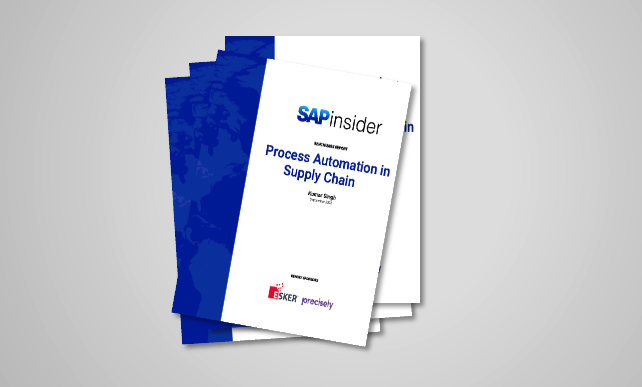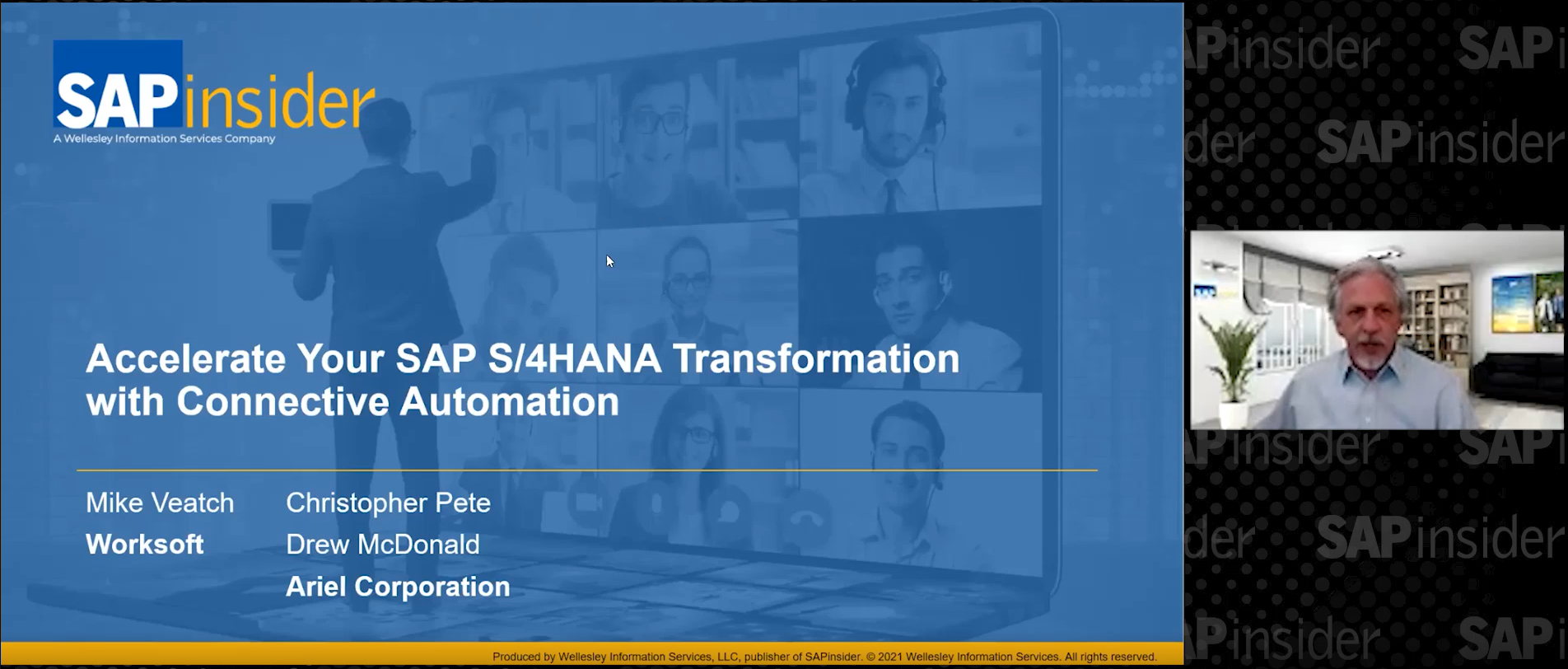Jump-Start Your Process Automation Projects with Cloud-Based Artificial Intelligence Technologies
by Jana Wuerth, Senior Product Manager, and Ivona Crnoja, Project Consultant, SAP AI Business Services, SAP SE
Explore related questions
For many organizations, artificial intelligence (AI) is no longer a future vision. It is already a key part of their plans for transforming into high-performing digital businesses with a competitive edge driven by automated processes and operations. For example, at least 50% of large global companies are projected to be using AI, advanced analytics, and the Internet of Things (IoT) in their supply chain operations by 2023. Furthermore, almost 60% of individual tasks involved in the source-to-pay process have the potential to be fully or largely automated using currently available technologies. Lastly, about 50% of the overall working time in finance and insurance is devoted to collecting and processing data, which represents a ripe opportunity for automation.
Statistics like these show a compelling case for cloud-based AI services. These services offer an easy way for organizations in various industries and lines of business to make AI-based technologies part of their innovation roadmap and to start benefiting from the productivity, efficiency, and agility they help create, which are especially critical in environments of uncertainty, such as the current COVID-19 pandemic. To help its customers improve the efficiency of business processes, reduce manual and repetitive work, and solidify the resilience of their operations, SAP offers SAP AI Business Services, a portfolio of cloud services that provide machine learning and AI capabilities for business applications.
This article provides process managers with an introduction to SAP AI Business Services and how they can be used to automate functions such as document processing, financial closing, recommendation capabilities, and service ticket classification. The article starts with a look at how these business services fit into a comprehensive digital process automation strategy and how they can help SAP customers drive end-to-end process automation. It then walks through two examples of how these services can improve processing time and quality: in a shared service center framework and in a business document processing scenario.
Introducing SAP AI Business Services
SAP AI Business Services (formerly known as SAP Leonardo AI Business Services) are part of the SAP Cloud Platform portfolio of services. Business services on SAP Cloud Platform leverage SAP technologies and SAP’s business process expertise to add reusable, cloud-based, business-relevant capabilities to SAP standard solutions and to enable the extension of customers’ legacy and third-party solutions. The services are designed to solve concrete business problems that can be found in various types of business processes, such as extracting information from invoices in accounts payable or submitting a travel expense report, and for this reason, they can be used across all types of lines of businesses within organizations.
SAP AI Business Services combine the concept of business services with innovative technologies to enable these capabilities for a variety of usage scenarios. These reusable services provide strategic machine learning capabilities that can automate and optimize business processes and enrich the customer experience across SAP’s intelligent suite of integrated, end-to-end applications, such as SAP S/4HANA, SAP SuccessFactors solutions, and SAP Customer Experience solutions. Through the open application programming interfaces (APIs) used by the services, they can be integrated into any SAP or third-party application to extend support for a process, enabling older legacy systems to become intelligent.
The SAP AI Business Services portfolio enriches the customer experience and provides immediate business value through the following services (Figure 1):
- Business Entity Recognition helps to detect and highlight any given type of named entity in unstructured text.
- Document Information Extraction enables the extraction of information from documents such as invoices and payment advices. Structured semantic information is extracted from unstructured documents and matched with relevant business data.
- Document Classification allows the categorization of documents into different categories that are relevant for further processing of those documents.
- Data Attribute Recommendation supports the automation of data management tasks by proposing categories, classes, and sub-categories.
- Invoice Object Recommendation proposes the correct general ledger (G/L) account and other cost objects for invoices that come in without a reference.
- Service Ticket Intelligence automatically classifies incoming service tickets and helps with resolving tickets faster by recommending similar tickets to the ticket processor.

Figure 1 — The SAP AI Business Services portfolio consists of services that are designed to solve concrete business problems
Using SAP AI Business Services in an End-to-End Process
SAP AI Business Services can be applied to various end-to-end processes either by using out-of-the-box integrations defined for some use cases, or by using the open APIs to define an integration. To give an idea of how this works, and how these services can be used to increase automation within end-to-end processes, we’ll look at two use cases that provide a useful illustration of combining services with one another and also with other intelligent technologies: shared service center automation and automated processing of business documents.
Shared Service Center Automation
In shared service centers, organizations bundle the provisioning of certain services to achieve higher service levels and quality standards. These improvement efforts often include creating economies of scale; eliminating redundancies in functions, people, and IT; and increasing the efficiency and standardization of processes. Typical examples of shared service centers include HR shared services for serving an organization’s employees or financial shared services for serving an organization’s suppliers.
To see what this might look like, let’s look at an example centered on a financial shared service center that takes care of supplier requests, inquiries, and complaints. In this process, shown in Figure 2, suppliers write an email or open a ticket in which they describe their situation or problem. Here, the Service Ticket Intelligence and Business Entity Recognition services are integrated with SAP Shared Service Framework to support the process.
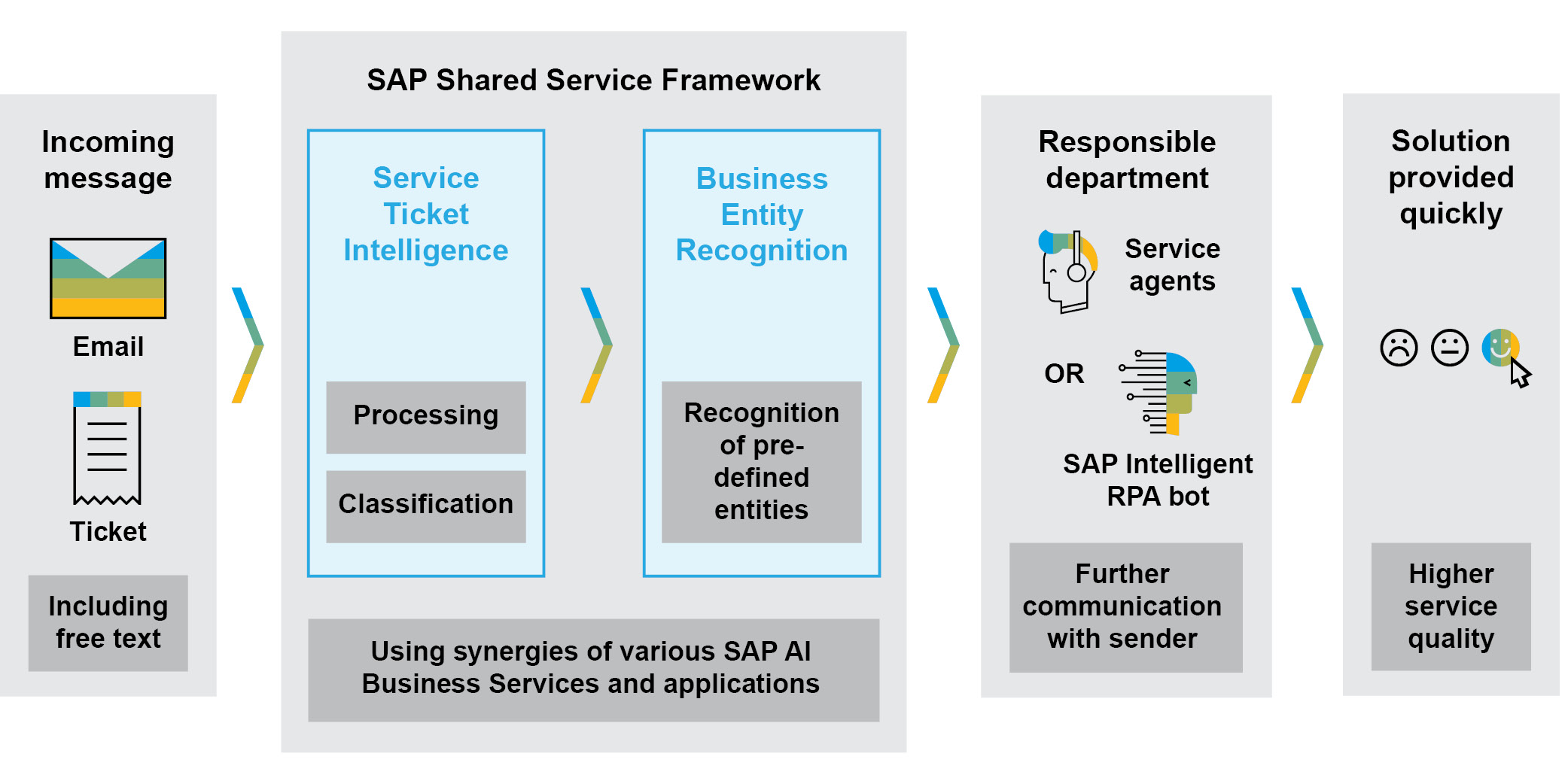
Figure 2 — An example scenario where SAP AI Business Services help automate a financial shared service center’s supplier inquiry process
Let’s say that a supplier writes an email asking for the payment status of an invoice (see Figure 3). In this example, the supplier has not yet received the payment for this particular invoice and is asking when to expect payment.
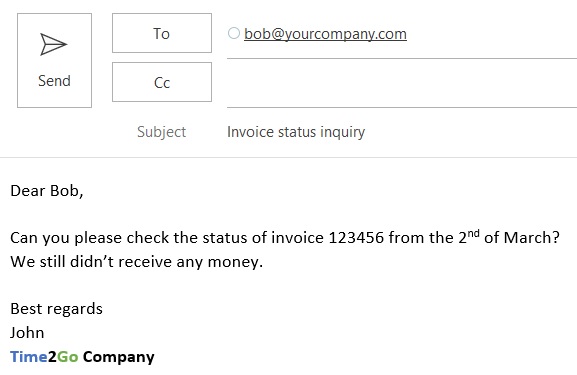
Figure 3 — In the example shared service center scenario, the supplier asks for an invoice update via email
When the email is received by the ticketing system, the Service Ticket Intelligence service is used to automatically determine the ticket category. The service uses historical data, on which the AI training is performed, to identify the correct category. In the example, the ticket category could be “invoice inquiry,” for instance.
After the ticket categorization, the Business Entity Recognition service identifies the relevant entities in the body of the email. In the example scenario (see Figure 4), the service is able to detect the customer, the date, and the invoice number referenced in the email. The Business Entity Recognition service then returns those detected entities via an API, and the values can be transferred into a receiving system — for example, they can be displayed to the shared service center agent processing the email.
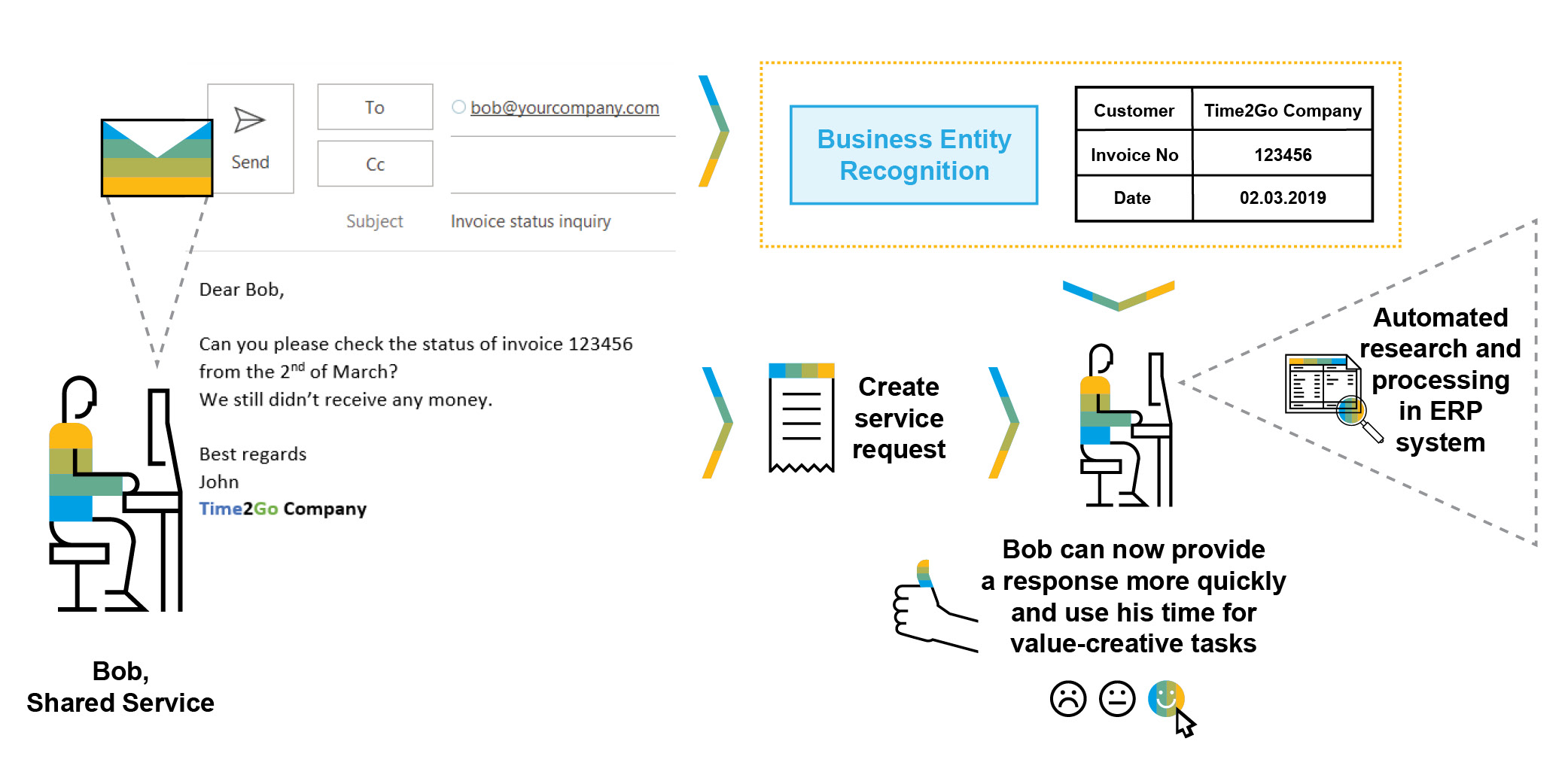
Figure 4 — In the example shared service center scenario, the Business Entity Recognition service identifies the relevant entities in the body of the email and returns them for display to the agent
The process can be further automated by adding SAP Intelligent Robotic Process Automation (SAP Intelligent RPA). A bot could pick up simpler requests, such as this invoice inquiry, instead of a human, saving even more time. With the extracted invoice number, the bot could go to the relevant back-end system, look up the current status of the invoice, and then automatically answer the supplier. With this type of support, the entire supplier invoice inquiry process can be fully automated. (A previous SAPinsider article took an in-depth look at getting started with process automation using RPA.)
SAP’s unique value proposition lies in the ability to combine different kinds of innovative solutions to provide its customers with unique end-to-end process automation capabilities. This enables customers to enrich standard processes and significantly increase the level of process automation across their organizations, going beyond the core process, to achieve operational excellence.
Intelligent Business Document Processing
Documents are at the core of just about any business process, and many enterprises across various industries still process large amounts of paper-based documents daily. Invoices alone amounted to approximately 550 billion paper-based and digital invoices worldwide, in the past year. Another 124 billion business e-mails are being sent and received every single day, while the UK alone prints 11 billion paper receipts per year. Considering the amount of resources, time, and effort needed to process these various forms of business documents in huge organizations, businesses have a pressing need for solutions that can help them automate the processing of these documents.
There are three services available with SAP AI Business Services that tackle the problem of document processing: Document Information Extraction, Document Classification, and Business Entity Recognition. The underlying principle is to first transform unstructured documents to structured information with machine learning-based document processing, and in the next step, embed the information into business processes for instant value, meaning improvements in speed and accuracy as well as significant cost reductions.
The three services function as follows:
- Document Information Extraction is a highly scalable cloud service that can fully automate the information extraction process, saving employees and enterprises valuable time that can instead be spent on higher value tasks while lowering the error rate and achieving more accurate results.
- Document Classification increases business process efficiency by automatically classifying documents into pre-defined categories, making the routing of documents to the respective processing department and automated follow-up processes possible.
- Business Entity Recognition, as described in the shared service center use case, automatically detects named entities in any given textual input, such as supplier ID or invoice ID.
Let’s look at a specific use case for the Document Information Extraction service. Processing invoices in the accounts payable department is a challenging and time-consuming task in most enterprises. Large numbers of invoices are received by the clerks daily and need to be processed accordingly. Invoices come in various formats, and each company sending invoices uses different templates and places information in different spots inside the document. Business-critical data and information is often extracted manually by the clerks, leading to long processing times and error-prone outcomes, as the process includes manual tasks such as reading the invoice, understanding its context, typing relevant information into the ERP system, and enriching extracted information with additional data.
The Document Information Extraction service can extract information from invoices (unstructured business documents) and semantically analyze the extracted information (see Figure 5). Vendor matching and employee matching capabilities enable the service to enrich the existing structured master data with additional business-critical data — such as an invoice number or supplier ID — for customers, employees, or suppliers. This enables employees to quickly return to relevant processes and to focus their attention on more value-creative tasks, rather than having to manually process the information as part of a lengthy process.
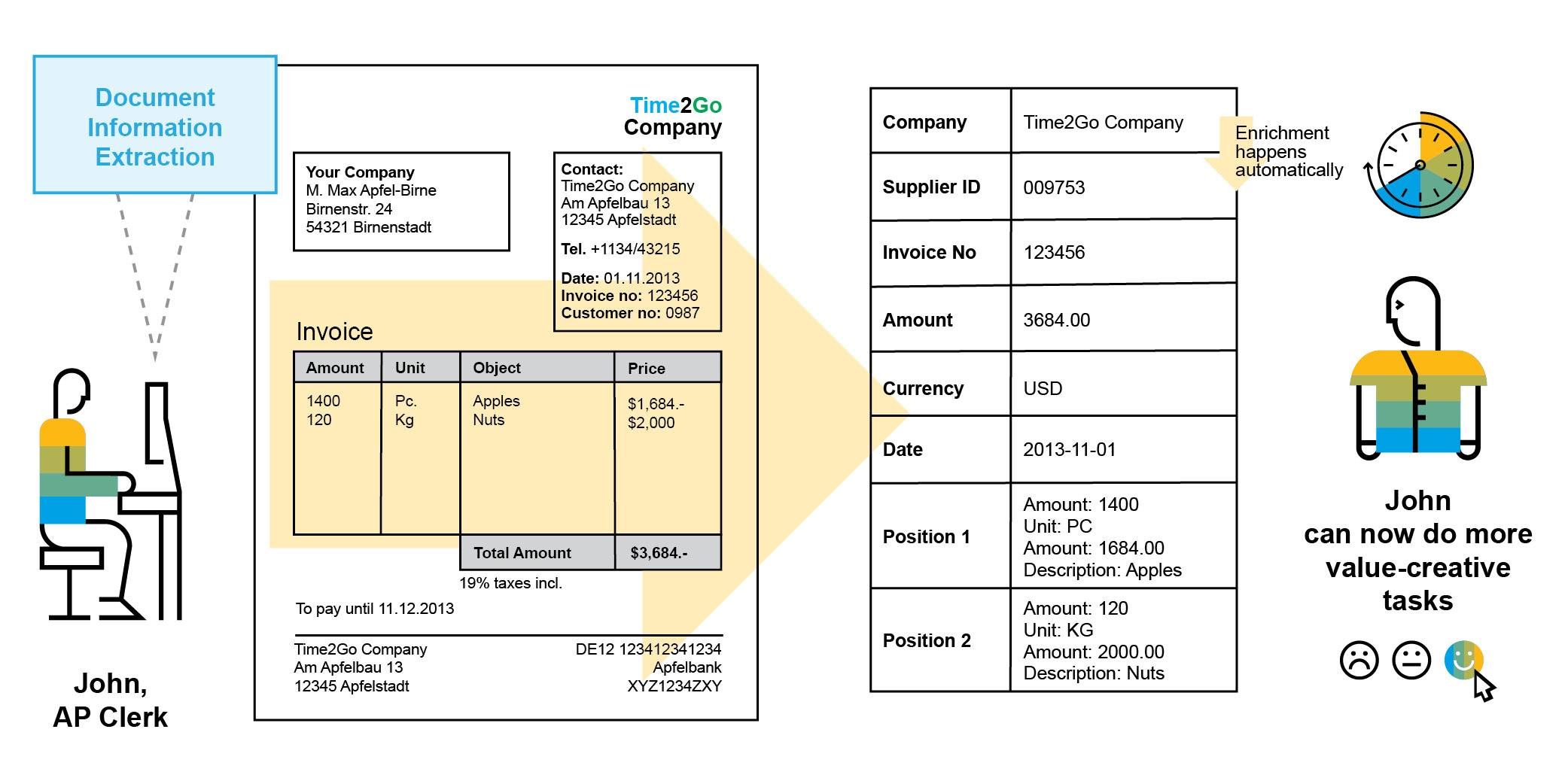
Figure 5 — In this example, the Document Information Extraction service can extract, structure, and enrich information from invoices
While this specific example focuses on the Document Information Extraction service, all three of the previously mentioned services are offered as part of the Business Document Processing portfolio, which can form a powerful end-to-end process when used together. Processing the large amounts of documents that organizations receive every single day can be tiresome and can take up huge amounts of time. With the help of the Document Information Extraction, Document Classification, and Business Entity Recognition services, this process can be almost fully automated.
Through the Document Classification service, incoming documents can be classified into customer-specific types, such as invoices or complaints. The Document Information Extraction service can then extract business-critical information from a document’s header or line item field to automate the follow-up processing. On the other side, through the Business Entity Recognition service, free text can be extracted to recognize and extract business-relevant entities and enable automated follow-up processing (see Figure 6).
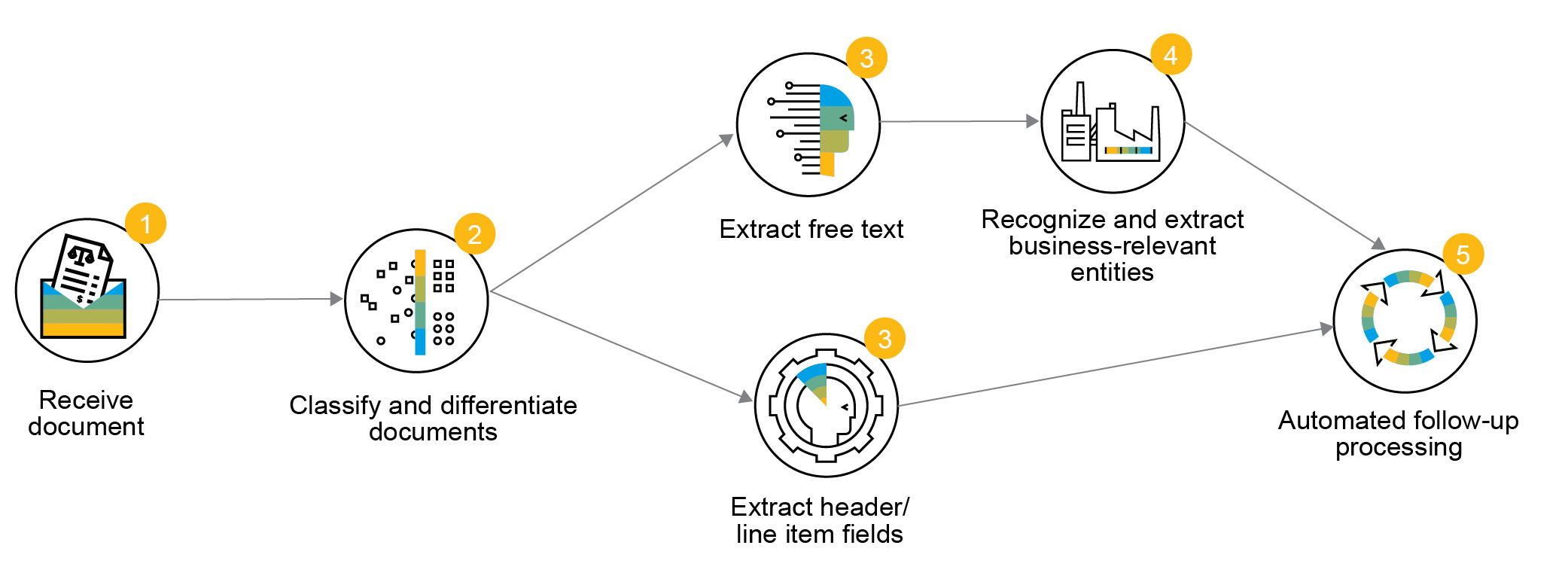
Figure 6 — The services offered as part of the Business Document Processing portfolio together can form a powerful end-to-end process based on machine learning
Summary
The implementation of AI-based business applications can transform an enterprise in myriad ways. The automation of business processes, the insights gleaned through improved data analysis, and the expanded possibilities for customer and employee engagement that can be granted with AI are crucial for the ongoing success of companies across industries.
With SAP AI Business Services providing an easy on-ramp to the benefits of AI, SAP customers don’t have to wait any longer to start taking advantage of its benefits. Learn more at the SAP Community page for SAP AI Business Services and take the services for a test drive with an SAP Cloud Platform trial.
Women in SAP Tech Spotlight

Ivona Crnoja, Project Consultant, SAP AI Business Services, SAP SE
What specific skills have you found to be most helpful in getting you where you are today?
I believe soft skills are of immense importance. While it is of course very important to also develop your job-specific hard skills, developing soft skills such as collaboration and networking skills, (written) communication skills, and problem-solving skills have become at least as critical. Also, I would recommend everyone who has the chance to spend some time either working or studying abroad. My years abroad have not only taught me to speak multiple languages, but also helped me develop many basic skills such as agility, empathy, critical thinking, and intercultural competences. Lastly, I believe it is crucial to keep up with the latest technology trends and developments since technology is advancing at an incredible speed and continuing to impact every aspect of our lives.
What is your organization doing right when it comes to transparency, collaboration, and inclusion?
SAP is a global organization with employees from all over the world. It is therefore strongly committed to topics such as diversity, inclusion, equality, and sustainability. Diversity, for example, has shown to be a crucial driver for performance and innovation, and I believe the fact that SAP places so much emphasis and value on these topics has been a crucial success factor in the past. No matter the nationality, ethnicity, culture, or sexual orientation, SAP preaches and practices a culture in which everyone feels included and empowered and no one is left behind. SAP also leverages technology to ensure inclusion, with streamlined processes and tools that are accessible for all. It gives me peace to know that I work for an employer that values every single individual for what they have to contribute.
What advice would you offer to women seeking to advance their careers?
Still being a fairly young woman myself, the one thing that I would like to impart to women of all stages and ages (myself included) is to be confident! Believe in yourself and your abilities, speak up, volunteer for that project (that seems somewhat over-ambitious), and don’t be afraid to ask for that salary raise. Remind yourself to be persistent and assertive, and try to not belittle yourself. Also, if your company offers such initiatives, make use of personal career coaching and mentoring and work on building a strong network of successful women that you admire who can support you on your way forward.

Jana Wuerth, Senior Product Manager, SAP AI Business Services, SAP SE
What do you like best about your career?
With so many innovations happening in technology, a career in this field is very diverse and fast-paced, and it never gets boring. I like this diversity and fast-paced environment because there is always something new to learn, and there are always new opportunities for growth and development. I am also fascinated by the things that can be achieved with technology and the progress that can be made in the world. For example, the way that a machine can recognize lung cancer on x-rays with higher confidence than a human being, enabling faster treatment and higher chances of recovery, shows that technology is still improving our way of life.
How would you advise women who are just starting out in their careers in technology?
A saying I find to have a lot of truth in it is, “A comfort zone is a beautiful place, but nothing ever grows there.” Try things out of your comfort zone. If your manager or your project lead asks you to do something you have never done before, take the task and try your best to achieve it. If you feel like it is not working out, you can still ask for help, but don’t say “no” or get scared because you have never done it before. Be bold and trust in yourself, in your skills, and in your abilities. We grow with our challenges.
What recommendations do you have to help women with their professional development?
One piece of advice I have for women who are at any stage of their professional career is this: “Do a good job — and talk about it.” Women tend to minimize themselves. They don’t talk about the great things they have achieved, and instead point out who helped them or say that it wasn’t that big of a deal. Don’t do that! Accept the compliments for the hard work you have accomplished. Don’t hide, but be proud of yourself, and especially, don’t let others take the credit for your achievements.
And don’t only talk about your achievements. State your opinion, share your viewpoint, and ask for a certain opportunity or the training you always wanted. Use initiatives for career development within as well as outside of your organization — for example, look for a coach or a mentor who can give you advice on how to handle certain situations or how to improve some of your weak spots. And lastly: be sure to network. Women are often excellent communicators — use this advantage to grow a large network of people who can help you and support you in achieving your goals.
Jana Wuerth (jana.wuerth@sap.com) is a Senior Product Manager for SAP AI Business Services. She focuses on go-to-market strategy and commercialization topics, and she is always on the lookout for new opportunities to infuse artificial intelligence into various business processes to improve efficiency and automation rates. Jana has been with SAP for more than 10 years and has experience in a number of roles, from consulting to solution management and product management. Taking the best out of these experiences, she is always enthusiastic about new approaches.
Ivona Crnoja (ivona.crnoja@sap.com) is a Project Consultant and Storyteller at SAP, driving various projects and communication activities for the SAP AI Business Services team in Germany. This team works on developing generic machine learning and artificial intelligence capabilities that customers can use out of the box to automate and optimize business processes. Ivona dedicates her time to exploring the latest artificial intelligence trends, while writing articles and blog posts to share the team’s latest achievements with the world.


